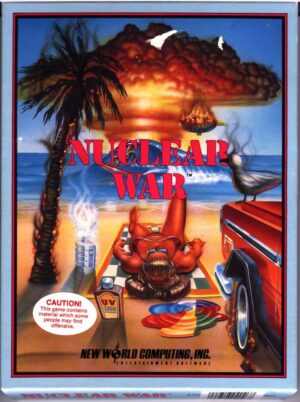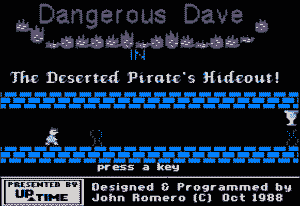Retro Replay Review
Gameplay
Harpoon delivers an astonishing level of tactical depth that few naval simulators of its era can match. Drawing directly from Larry Bond’s 1980 board game, it faithfully recreates Cold War naval warfare down to individual missile ranges and sonar detection windows. Each of the 13 scenarios presents a unique tactical puzzle: whether it’s a brief skirmish in the GIUK Gap or a sprawling engagement in the Pacific, players must juggle weapons selection, sensor management, and real-time decision making under pressure.
(HEY YOU!! We hope you enjoy! We try not to run ads. So basically, this is a very expensive hobby running this site. Please consider joining us for updates, forums, and more. Network w/ us to make some cash or friends while retro gaming, and you can win some free retro games for posting. Okay, carry on 👍)
The authentic arsenal of over 100 Soviet and NATO weapons transforms every playthrough into a mastery challenge. From long-range anti-ship missiles to close-in naval guns, each system has its own performance characteristics that you must learn and exploit. Harpoon’s informative database serves as an indispensable briefing tool, providing quick access to the strengths, limitations, and tactical doctrines behind each piece of hardware. This level of realism rewards careful study, encouraging players to run multiple “what if” scenarios before pulling the trigger.
Control is delivered through a clean but utilitarian interface, where players methodically plot waypoints, set rules of engagement, and toggle between radar, sonar, and electronic‐intelligence displays. While the learning curve can be steep for newcomers, tutorials and the scenario editor ease the transition. The editor itself is a hidden gem—once mastered, it allows for custom maps, friendly and enemy orders, and countless hypothetical engagements. With additional data disks released post-launch, the replay value only grows as new theaters and orders of battle become available.
Graphics
Visually, Harpoon favors function over flair, presenting tactical maps in crisp 2D vector graphics that remain clear even at the most activity-packed moments. Ship and aircraft icons are simple but instantly recognizable, color-coded for ease of identification. While there’s no attempt at 3D modeling or cinematic camera angles, the clean schematic view supports rapid information processing—vital when multiple contacts appear on screen.
Detail is instead poured into the sensor overlays: radar arcs, sonar contact cones, and electronic-signature indicators are all rendered legibly and updated in real time. This visual economy keeps the player’s focus where it belongs—analyzing enemy movements and plotting your next strike. Zoom levels help manage the flow of information, from broad theater maps to tight tactical displays, ensuring you never lose sight of your fleet’s disposition or the adversary’s approach vectors.
Supplemental art, such as loading screen maps and system diagrams, reinforces the Cold War atmosphere. Even though modern players might expect more graphically intensive simulations, Harpoon’s minimalist aesthetics hold up as a design choice rather than a limitation. By eschewing detailed sprite work or elaborate terrain textures, the game delivers a consistently clear and distraction-free command interface.
Story
As a pure simulator, Harpoon doesn’t weave a character-driven narrative but instead crafts tension through historical Cold War contexts. Each scenario is framed by concise yet evocative briefing text, outlining political stakes, force compositions, and potential escalation triggers. You become the naval commander on the brink of conflict, balancing diplomacy and firepower as NATO and Warsaw Pact fleets square off in contested waters.
The lack of a scripted plot invites players to create their own maritime epics. A single misstep—failing to detect a submarine, miscalculating missile ranges, or underestimating electronic-warfare capabilities—can spiral into a full-blown crisis. This emergent storytelling through gameplay outcome makes every mission memorable, as you recount how a lone frigate saved a carrier group or how a surprise missile volley turned the tide of battle.
Later expansions and the scenario editor further enrich this sandbox. Enthusiast-created battles, from the Norwegian Sea to the South China Sea, deepen the sense of global naval chess. Whether you’re reenacting a hypothetical World War III flashpoint or scripting a peacekeeping blockade, Harpoon’s framework supports an ever-evolving collection of Cold War vignettes.
Overall Experience
Harpoon stands as a landmark in naval simulation, delivering hard-edged realism and strategic complexity that remain compelling decades after its release. Its no-nonsense presentation and exhaustive database encourage true naval tactics, rather than arcade-style dogfights or visually driven spectacle. For players willing to invest the time, it offers an immersive command experience unmatched by many contemporary titles.
The game’s modular design—starting with the GIUK Gap battleset and later welcoming expansions and community scenarios—means there’s always fresh content to explore. The scenario editor transforms casual players into amateur designers, crafting custom situations that test both creative imagination and tactical acumen. Few simulations combine longevity and depth as effectively as Harpoon.
While modern gamers may need patience to adapt to its sparse graphics and intricate interface, those who do will be rewarded with a richly detailed naval sandbox. Harpoon is a must-have for anyone seeking an authentic Cold War command simulator—one that challenges you to think like a fleet admiral and rewards you with unforgettable maritime showdowns.
 Retro Replay Retro Replay gaming reviews, news, emulation, geek stuff and more!
Retro Replay Retro Replay gaming reviews, news, emulation, geek stuff and more!









Reviews
There are no reviews yet.